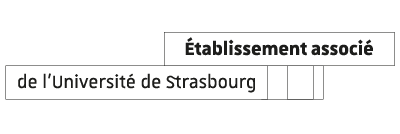Information importante
La page que vous consultez correspond à l'offre de formation 2023-2024.
Trouvez votre formation pour l'année universitaire 2024-2025
Monitoring: active and passive methods
- Cours (CM) -
- Cours intégrés (CI) 21h
- Travaux dirigés (TD) 3h
- Travaux pratiques (TP) -
- Travail étudiant (TE) -
Langue de l'enseignement : Anglais
Niveau de l'enseignement : C1-Autonome - Utilisateur expérimenté
Description du contenu de l'enseignement
Active monitoring: This course aims at presenting through lectures the theory and the principles of active monitoring seismic methods. At the end of this lecture, the students would be able to define a feasibility study and a 4D seismic workflow, identify the seismic parameters sensitive to a change in fluid in a reservoir coupled to the effects of production on these parameters. Some order of magnitude of 4D effect on seismic data would also be given during this course.
Passive monitoring: In introduction, we will cover the various settings in which passive seismic monitoring of reservoir are employed today and the usefulness of such monitoring. We will then dedicate some time discussing the characteristics of the different seismic equipment and the design of an appropriate strategy for monitoring a reservoir (borehole vs surface sensor, network vs array, …). In a third chapter we will cover modern techniques for detecting and locating with high precision small amplitude signal such as micro-seismic events. The fourth chapter will investigate the methods that can be used for inferring the stress state and the pore pressure at depth from the analysis of these small earthquakes. Namely, we will review the methods for focal mechanism computation and stress tensor inversion techniques applied to these data. In a final chapter we will see how we can extract information about the reservoir from the analysis of the background seismic signal. Typically, we will look at the spectral shape of this background signal and derived velocities and velocity variations from the record of the background seismic noise. Numerous case studies will be studied during the course and we will dedicate a significant part of the lectures to the applications of the theoretical concepts with computer exercises on real dataset.
Passive monitoring: In introduction, we will cover the various settings in which passive seismic monitoring of reservoir are employed today and the usefulness of such monitoring. We will then dedicate some time discussing the characteristics of the different seismic equipment and the design of an appropriate strategy for monitoring a reservoir (borehole vs surface sensor, network vs array, …). In a third chapter we will cover modern techniques for detecting and locating with high precision small amplitude signal such as micro-seismic events. The fourth chapter will investigate the methods that can be used for inferring the stress state and the pore pressure at depth from the analysis of these small earthquakes. Namely, we will review the methods for focal mechanism computation and stress tensor inversion techniques applied to these data. In a final chapter we will see how we can extract information about the reservoir from the analysis of the background seismic signal. Typically, we will look at the spectral shape of this background signal and derived velocities and velocity variations from the record of the background seismic noise. Numerous case studies will be studied during the course and we will dedicate a significant part of the lectures to the applications of the theoretical concepts with computer exercises on real dataset.
Compétences à acquérir
At the end of this unit, the student will be able to:
- Identify the parameters of a reservoir that are likely to change with a fluid substitution
- Carry out a feasibility study on the expected seismic response in a reservoir in the event of a change of fluids in place
- Define the best network strategy in order to record and analyze micro-seismic event
- Apply modern technique for seismic event detection and location
- Process seismic event records in order to retrieve information about the stress state
- Use the seismic signal to monitor variation of the seismic velocity and interpret them in terms of reservoir mechanics
Contact
Responsable
Olivier Lengliné
MASTER - Sciences de la Terre et des planètes, environnement














